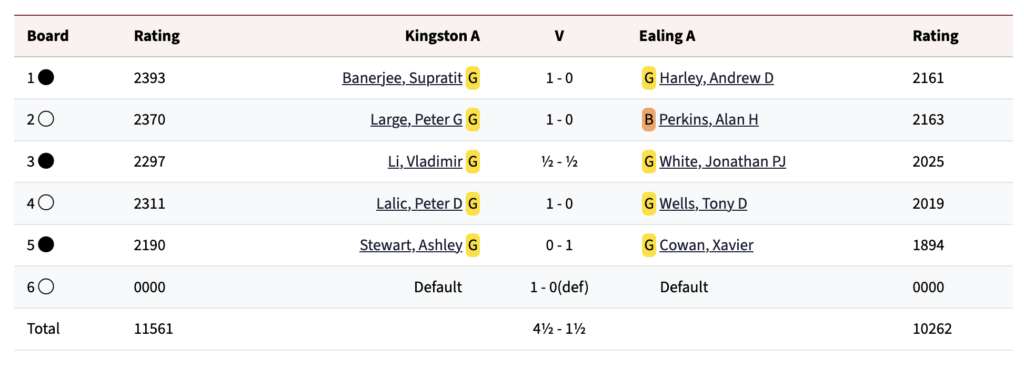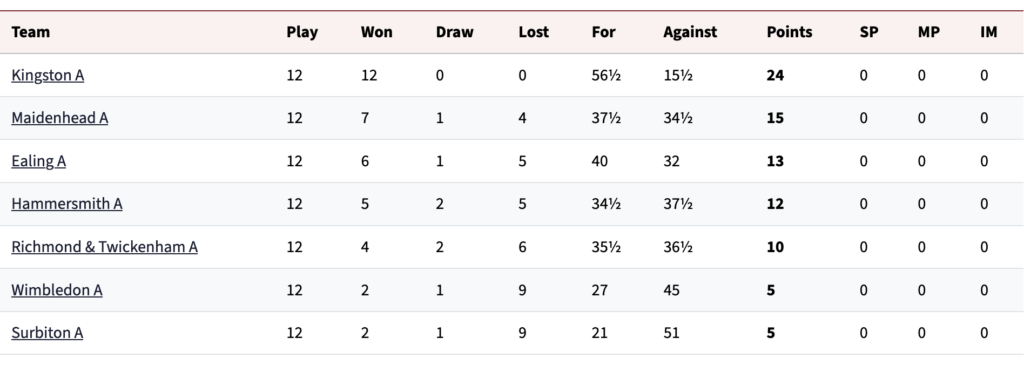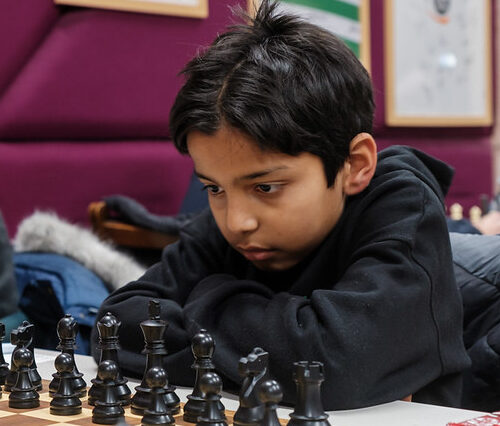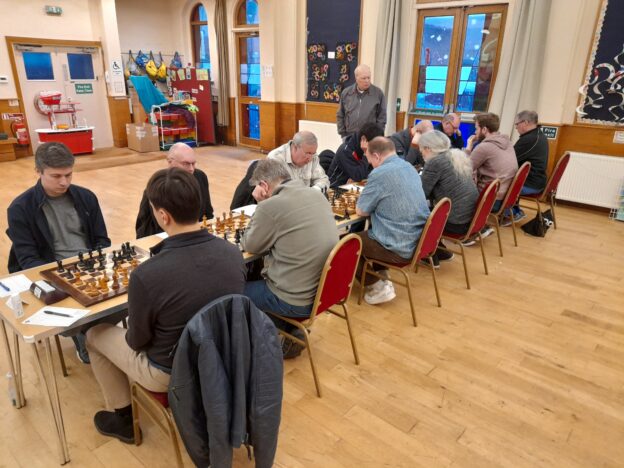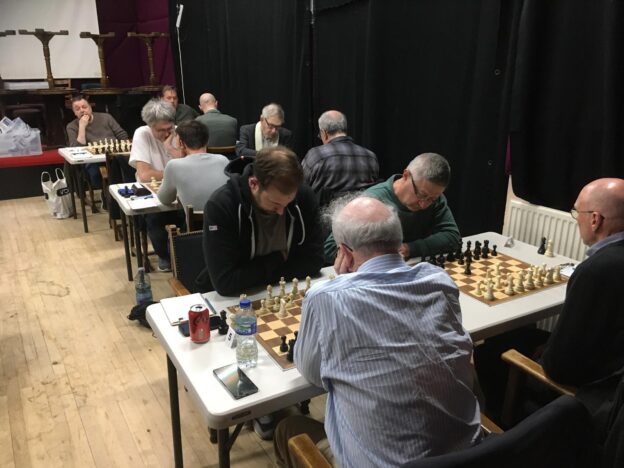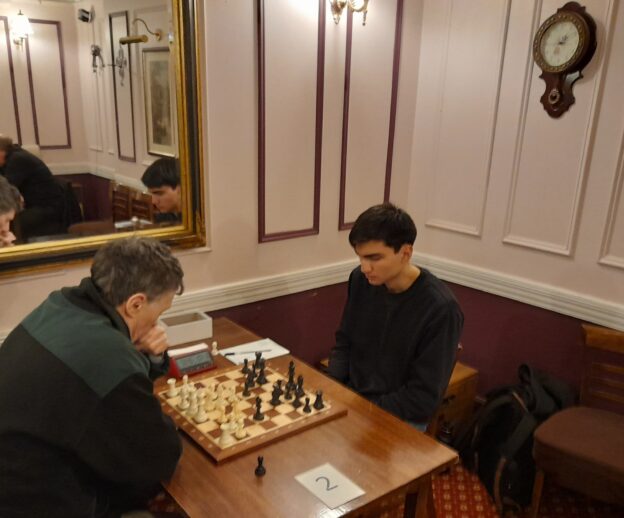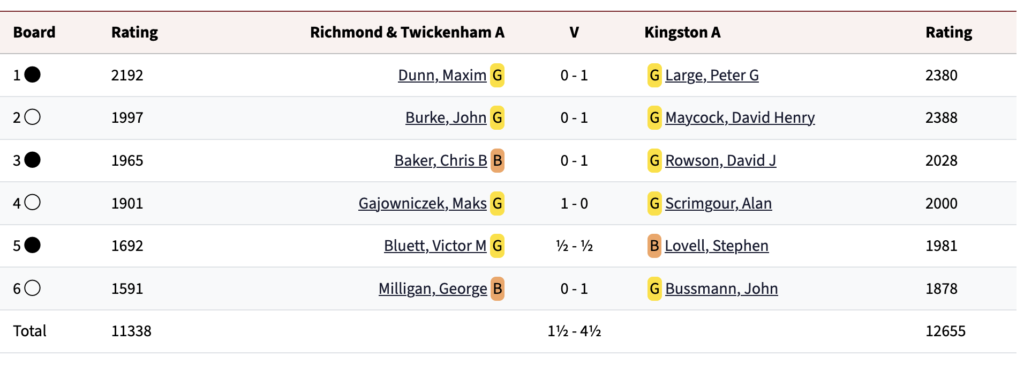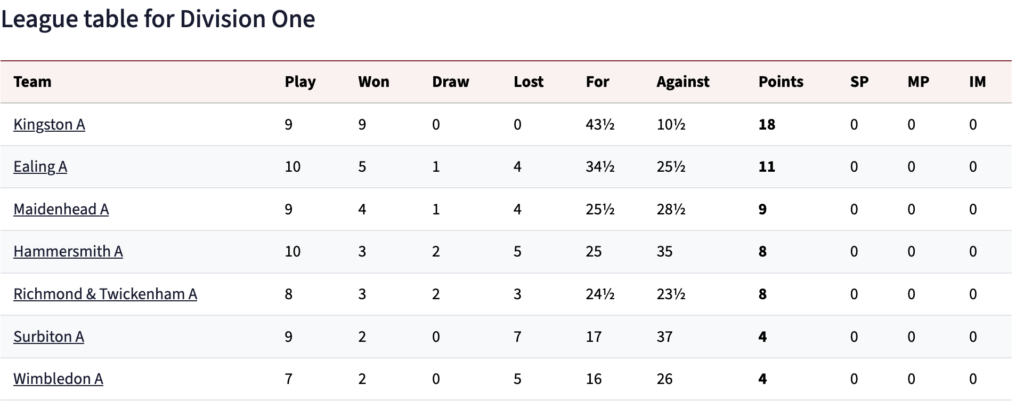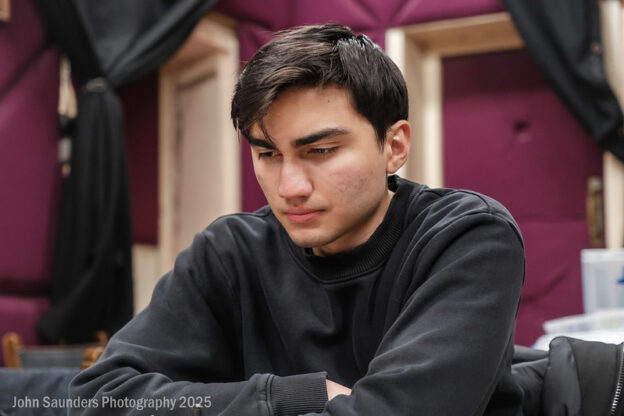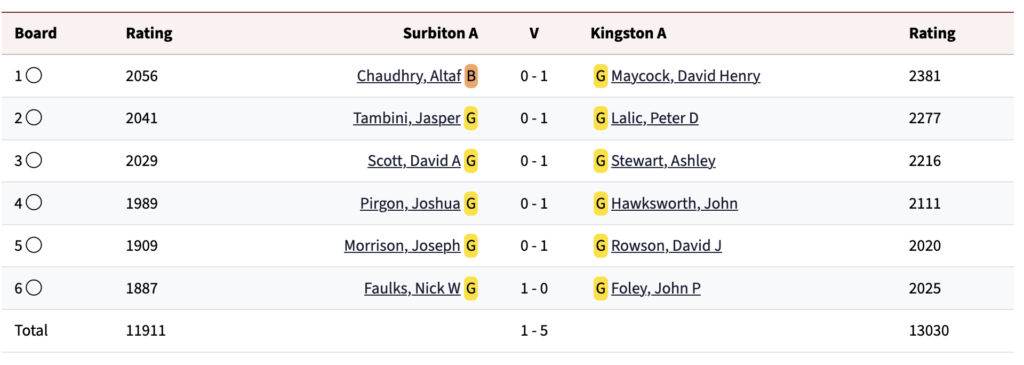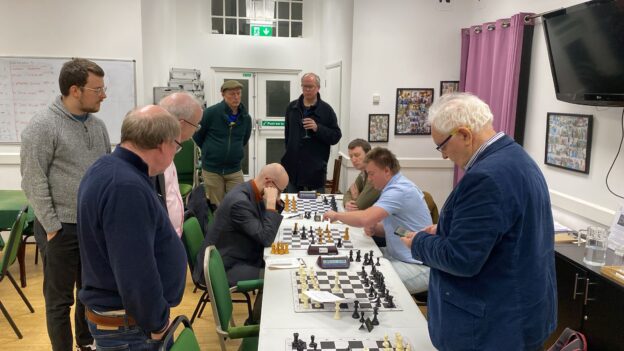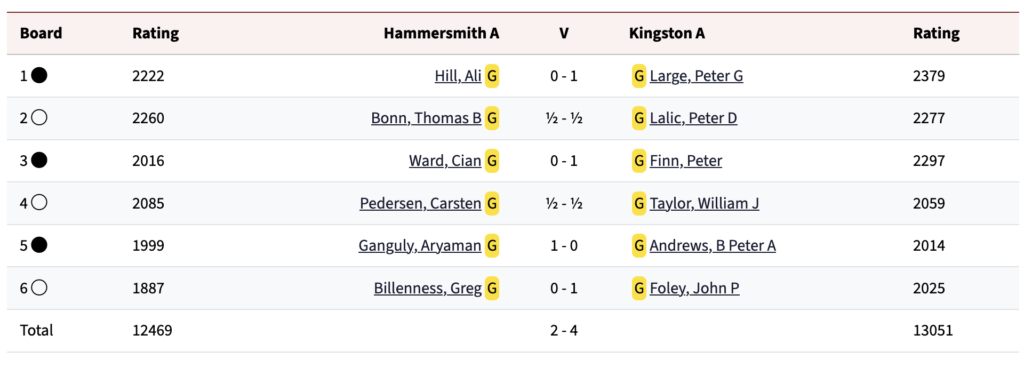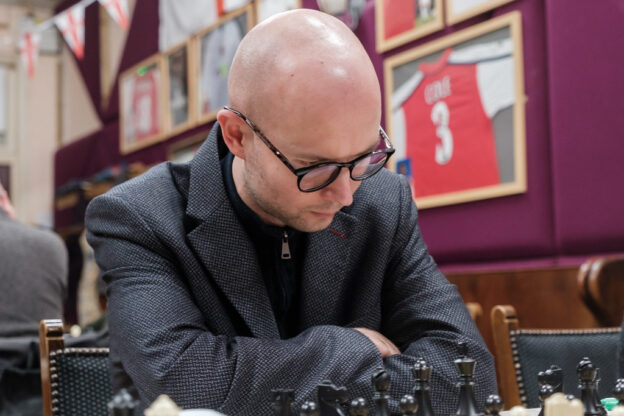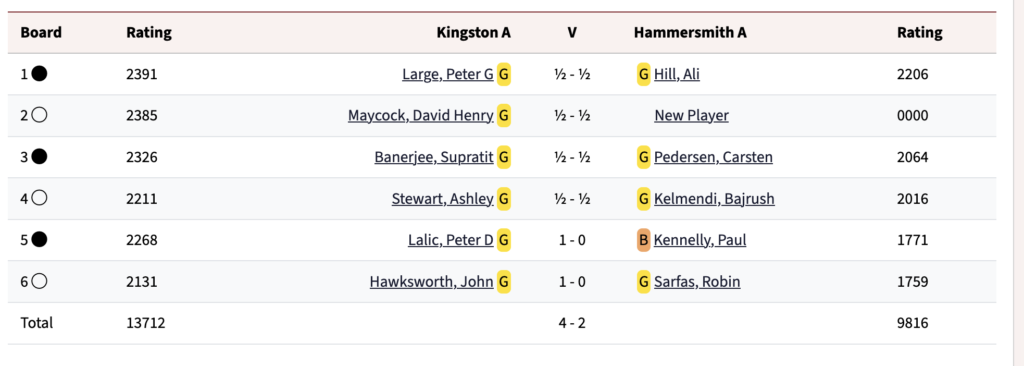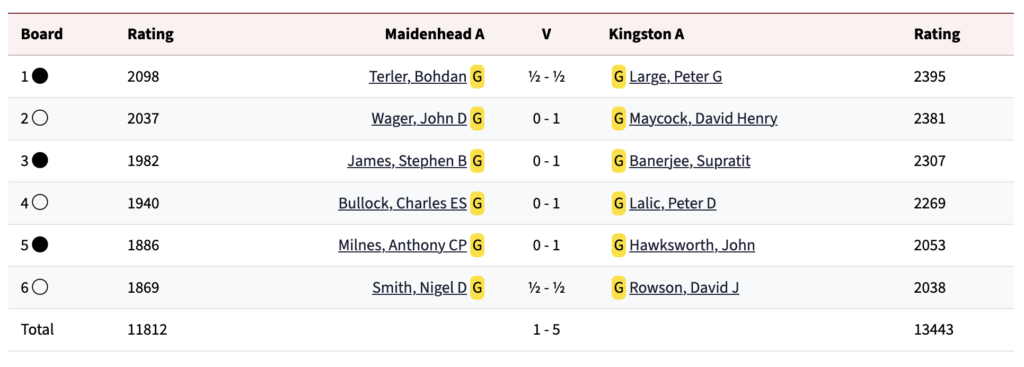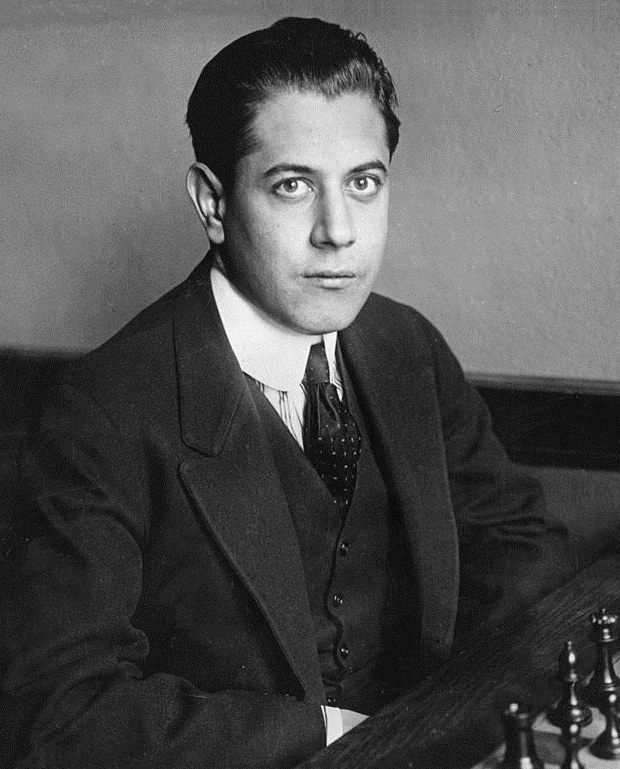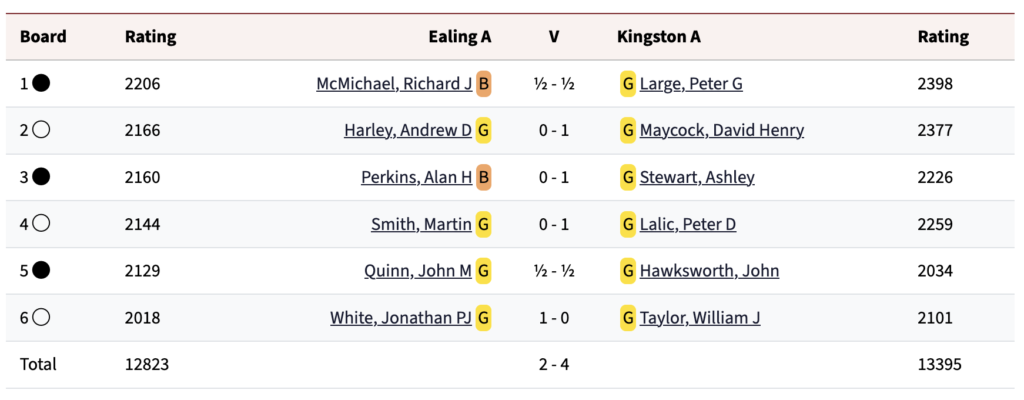Kingston A v Ealing A, Thames Valley League division 1 match played at the Willoughby Arms, Kingston on 12 May 2025
After contesting 11 matches crammed into just five months of play, we arrived at our final Thames Valley division 1 encounter on Monday 12 May. I say “we arrived”, but I was actually abroad for this last match and was grateful to Peter Large for taking on the captaincy duties.
Kingston effectively made a winning start before any of the players had sat down, as Ealing’s captain, Andrew Harley, considerately informed us in advance that their board 6 had had to drop out due to pressure of work.
The first game to finish was that on board 3, where Jonathan White had moved 1. f4, Bird’s Opening, against Vladimir Li. A complicated set of exchanges took place in the centre of the board, leading, eventually, to a level position. Despite the players still having four pieces and six pawns each, neither of them saw a reason to continue.
In Vladimir’s case this was probably partly due to his disappointment at not having taken some chances to gain an advantage earlier. Vladimir has played little recently and he said afterwards, with typical self-criticism, “I think I am simply in bad form for a variety of reasons. The main one is being rusty.” To the average observer the chances not taken were far from obvious. In the position below White has just played 11. Qa4? attacking two pawns but potentially reducing the co-ordination of his pieces.
The board 4 game opened with Peter Lalić, with White, choosing the Austrian Attack against Tony Wells’s Modern Defence. His opponent advanced his kingside pawns but neglected his piece development. This was the position after White’s 13th move:
This game is a good example of the perils of underdevelopment. Tony Wells only brought out his king’s knight on the 34th move, upon which Peter immediately chopped it off.
Board 5 saw Ealing’s Xavier Cowan, with White, opting for the Sämisch Variation against Ash Stewart’s King’s Indian Defence. After the queens were exchanged a position with asymmetrical pawn structures was reached, in which chances were roughly even, but Black had to keep an eye on White’s c4 and d5 pawn pair:
On board 2, against Alan Perkins’ Sicilian Defence Peter Large played a kind of Closed line with Bb5. His bishops were soon pointing menacingly at Black’s king’s position:
The remaining game saw the debut of Supratit Banerjee (pictured above) on board 1 for Kingston, an acknowledgement of the remarkable fact that at just 11 years of age he has reached an ECF rating of 2401. With Supratit Black, the opening was a classical French Defence (1.e4 e6 2. d4 d5 3. Nc3 Nf6 4. Bg5 dxe4). White won a pawn on the queenside, but Supratit played resourcefully to set his opponent problems. This was the position after White’s move 26:
Thus Kingston not only won the match 4.5-1.5, but also completed an historic 100%-winning Thames Valley division 1 season (see final table below). As captain, I want to thank all our players for making our progress so smooth and relatively undramatic. We have an incredibly strong squad, but results don’t always follow ratings, and what was impressive was the determination and consistency with which our top players won game after game.
Special mention must be made of Peter Lalić’s remarkable record of 10 wins and one draw from 11 games, and also the fact that both Peter Large and David Maycock had ECF rating performances of 2441 for their Thames Valley League seasons. John Hawksworth and Ash Stewart were great additions to the squad, and our very talented young players Supratit Banerjee and Luca Buanne made significant contributions. At different times different clubs looked capable of challenging us, but none of them managed to maintain such a level of consistency.
Thanks are also due to Peter Andrews and Peter Large for stepping in to captain in my absence, to Stephen Moss for all his support and advice, and to Greg Heath and Ed Mospan for unfailingly being available to set things up in the Willoughby.
That makes it three Thames Valley League titles in a row. Can we do it again next season?
David Rowson, Kingston A captain in Thames Valley League division 1
